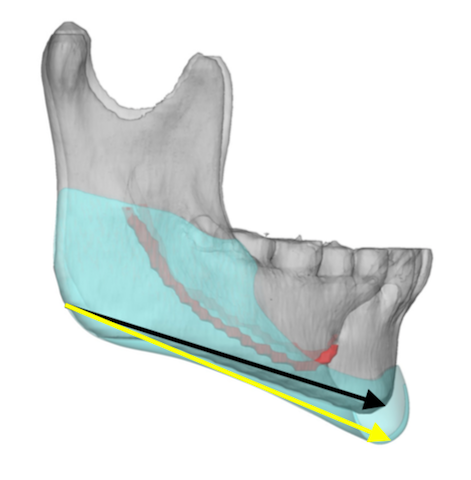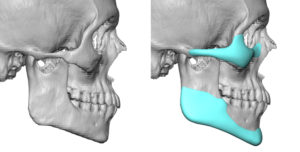Background: The shape of the entire face is heavily influenced by its underlying bone structure as is well known. While the effects of the overlying soft tissue do also have a significan influence on facial shape, that becomes less relevant the leaner one’s face becomes. This is seen along the jawline where thick facial and neck tissues can camouflage certain jaw shape abnormalities. Conversely a deficient jawline bone structure can make the soft tissues look thicker than they otherwise might be.
One jawline deficiency where a face can look shorter and fuller is in the flat mandibular plane angle patient. In cephalometrics the mandibular plane angle is identified as…… In the face this usually appears as a deficient vertical chin length and a more square look to the face in the front view. This can also be accompanied by a dental overbite which creates a lower jaw over rotation. It is also possible that the chin/lower facial thirds is of adequate length and that the posterior jaw angle length is too long, but this is much more uncommon.
Derotating the flat mandibular plane angle is primarily about vertical chin and anterior jawline lengthening. At the same time the jawline can also be enhanced by widening the jaw angles and squaring out the chin. Such 3D jawline augmentation changes can only be accomplished by a custom jawline implant design.
As many men undergo custom jawline implant augmentation, they often take it as an opportunity for a complete facial masculinization effort. Such changes involve the cheek and eye area using a custom infraorbital-malar implant as well. The goal is to have a higher and more defined cheeks with more support to the infraorbital rim area to help elevate the lower eyelids and achieve a more narrow eye shape.
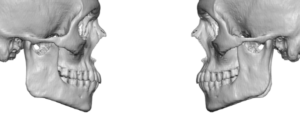
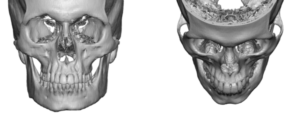

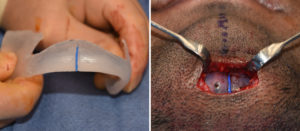
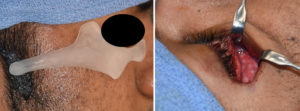
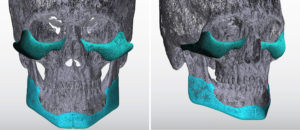
Case Highlights:
1) The flat mandibular plane lower face is one where the vertical length of the chin is close to the horizontal level as the jaw angles.
2) In a custom jawline implant the chin can be vertically lowered while keeping the jaw angle point at its natural position to create a more aesthetic mandibular plane angle.
3) To create a more narrow eye look the level of the infraorbital rim needs to be raised in a custom infraorbital-malar implant.
Dr. Barry Eppley
Indianapolis, Indiana

